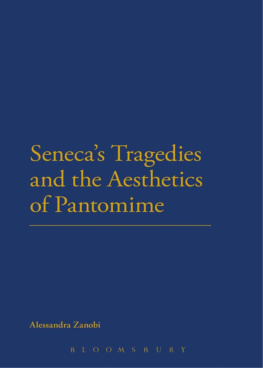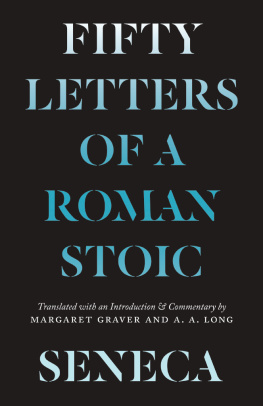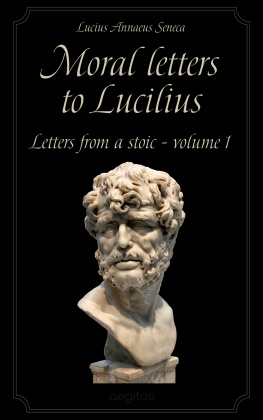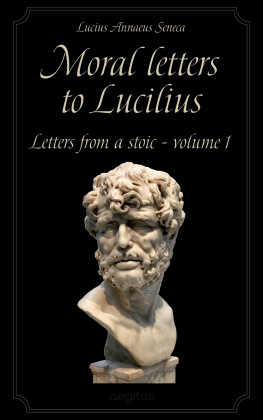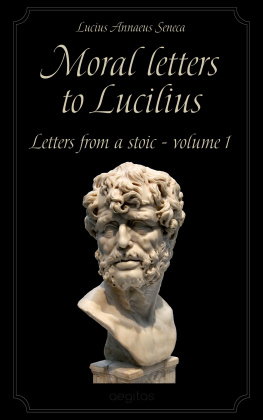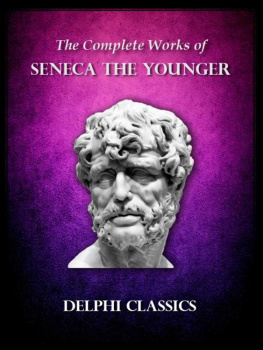CICERO
Studies on Roman Thought and Its Reception
Edited by
Ermanno Malaspina
Mireille Armisen-Marchetti
Francesca Romana Berno
Carmen Codoer
Perrine Galand
Henriette Harich-Schwarzbauer
Robert Kaster
David Konstan
Carlos Lvy
Sabine Luciani
Rita Pierini
Mortimer Sellers
Jula Wildberger
Veronica Revello
Volume
ISBN 9783111007427
e-ISBN (PDF) 9783111014845
e-ISBN (EPUB) 9783111014890
Bibliographic information published by the Deutsche Nationalbibliothek
The Deutsche Nationalbibliothek lists this publication in the Deutsche Nationalbibliografie; detailed bibliographic data are available on the Internet at http://dnb.dnb.de.
2023 the author(s), published by Walter de Gruyter GmbH, Berlin/Boston
This work is licensed under the Creative Commons Attribution-NonCommercial-NoDerivatives 4.0 International License.
For my father and my colorful family
Studia, hereditarium et paternum bonum
(Sen. Marc. 1.6)
Acknowledgements
When in November 2018 I began to work on the present project, I was firmly persuaded that Senecas Consolatio ad Marciam deserved renewed attention, and that this attention should take the form of a new commentary ad loca. The three years that followed were tough enough to show that there was a deeper, more existential reason to delve into Senecas text. In a sense, I myself and most of the people around me quickly became Senecas consolandi as the Covid-19 pandemic and the developing international crisis mixed with (and partly gave rise to) several personal and collective difficulties. When my father who instilled in me a stubborn passion for literature had the onset of a progressive neurological disorder, I inevitably felt deeper sympathy for Marcia, but I was also led to investigate more thoughtfully the cognitive and psychological foundations of Senecas moral therapy. Although I must confess that I do not agree with all the conclusions that follow from Stoic natural philosophy, I am immensely grateful to Seneca for reminding me over and over again that human relationships and genuine love offer both the speediest way out of personal sorrow and the most satisfying reward for the everyday drudgery of life. This book is literally made up of the love bonds the oikeisis bonds, as Seneca would have called them that have made it possible and is dedicated to them.
As an unconventional teacher, my father has never ceased to show me that good literature can give form even to formlessness and to formless pain. Without knowing a word of Greek and Latin, my mother has taught me that philology is not an academic discipline, but a way of life which spans both the kitchen and the office. My sister Laura has accompanied me at every step, making sure I was not in lack of a word of insight and humor. I will never find enough words to express my gratitude to my wife Chiara and my children Clelia and Emanuele, who have tolerated my absences and vagueness arising from the gestation of this commentary for far too many years. Chiara has always been a fruitful vine in the inner part of myself, Clelia and Emanuele are like olive shoots deep-rooted in my soul. With their superhuman patience and their gratuitous love, they have allowed this book to take shape day after day and have demonstrated that wisdom the gift of oneself is not as rare as the phoenix pace Seneca.
Many friends and colleagues have helped me in a variety of ways, and to them I likewise extend my sincerest thanks. It is impossible to mention all of them by name without these acknowledgements becoming a book in themselves. Both the University of Palermo and the Convitto Nazionale G. Falcone have made a decisive contribution to the completion of this project by creating a lively and congenial research environment. Ermanno Malaspina has provided me with invaluable advice ever since I conceived the idea of writing a commentary. I am extremely grateful to him, Veronica Revello (editorial staff of Cicero Series), and the two anonymous referees for carrying out an exemplarily scrupulous and constructive review of my manuscript. Francesca Romana Berno, David Konstan, and Giusto Picone have borne the burden of reading much of an earlier draft of the book and have offered many illuminating suggestions. Carlo M. Lucarini discussed with me crucial passages of the Latin text at an early stage and offered detailed insights into them. Among the people who supported me directly and indirectly, with their prodigious learning and their humane understanding, I should mention at least Han Baltussen, Myrto Garani, Luciano Landolfi, Rita Marchese, Steve Newmyer, Elisa Romano, Christian Vassallo, Francesco Verde, Amanda Wilcox, and Pamela Zinn. But this is by no means a complete list and, most importantly, I am very thankful to each and every person who over these years has increased my sensitivity to the issues of grief, parental affection, and social pressure in my classes or at the train station. The main ambition of this book is to show that Seneca and the ancients still have a word to say about these and many other issues about our own lives.
Introduction
Apprendre mourir. Senecas First Lesson on Death
Michel de Montaigne devotes one of the most well-known chapters of his Essais to show that to study philosophy is to learn to die (que philosopher cest apprendre mourir). According to Montaigne, the premeditation of death is the premeditation of liberty insofar as there is nothing of evil in life for a person who rightly understands that the loss of life is no evil. At the dawn of his career as a philosophical writer, Seneca, like Montaigne, was persuaded that philosophy can set humans free from the bondage of grief and anguish by defeating the fear of death, and that scholarly disagreements over single issues are less important than often assumed.
1.1 Date
It should no longer be controversial that the Consolatio ad Marciam (hereafter ad M.) is the earliest of Senecas extant writings, an invaluable testimony to the genesis of Senecas project of doing philosophy Stoic philosophy in Latin for a
The fact that Gaius is never mentioned in our text can be considered a kind of adulatio ex silentio a deliberate act of prudence for in all of Senecas other writings Gaius stands out as Natures monster, a man with a characteristically vicious disposition symmetrical to the virtue of the sage.
1.2 Context
Once we have set the work in the general framework of the Gaian period, we can try to investigate with more precision Senecas intellectual aims and rhetorical strategies. One should start by noticing that, given the scarcity of our evidence, Senecas position under Gaius has been the subject of various speculations. This should be our starting point when approaching anew the ad M., its intellectual program, and its strategies of persuasion.
Of course, interpreting Senecas therapeutic arguments as a well-thought-out rewriting of the consolatio genre by a committed philosopher who had eagerly turned to Stoicism under the influence of his third teacher Attalus of Pergamon Clarke summarizes Senecas position in this period as follows:
By 39, he was closely connected with court circles; he had perhaps by now contracted his illustrious marriage he was about forty; he had attained a position of popularity and pre-eminence by his literary and rhetorical activities; and his polished and pointed wit would have aided his progress in the imperial circles. Not only that; he had the backing of a prominent colonial family, noteworthy for its wealth, its literary talents, and its imperial influence.


